Design Works
Revised and Expanded Edition
DESIGN WORKS
A Guide to Creating and Sustaining Value through Business Design
Revised and Expanded Edition
Heather M.A. Fraser

Heather M.A. Fraser 2019
Rotman-UTP Publishing
University of Toronto Press
Toronto Buffalo London
utorontopress.com
Printed in the U.S.A.
ISBN 978-1-4875-2290-2
 Printed on acid-free paper.
Printed on acid-free paper.
Library and Archives Canada Cataloguing in Publication
Fraser, Heather M.A., 1957, author
Design works : a guide to creating and sustaining value through
business design / Heather M.A. Fraser. Revised and expanded edition.
Includes bibliographical references and index.
ISBN 978-1-4875-2290-2 (softcover)
1. Organizational change. 2. Business planning. I. Title.
HD58.8.F73 2019 658.406 C2018-905717-3
University of Toronto Press acknowledges the financial assistance to its publishing program of the Canada Council for the Arts and the Ontario Arts Council, an agency of the Government of Ontario.


Dedicated to the memory of my parents,
Elizabeth and Herbert.
CONTENTS
INTRODUCTION
When I wrote the first edition of this book in 2012, enterprises around the world were wrestling with how to awaken their capacity to innovate. A lot has transpired since then. Increasingly, innovation is no longer seen as a stream of activity but rather the nature of business itself. To thrive and survive, an enterprise must be continually searching for new ways to create and sustain value to the market and capture value to fuel the enterprise.
To help unlock enterprise potential, many enterprises have evolved their ideology and practices. Design thinking has become all the rage, and innovation labs and incubators have popped up everywhere. Yet, despite these well-intended efforts to ignite innovation, some fundamentals are often missing in building an enterprises capacity to continually innovate and to more seamlessly integrate business and design:
 Embedding design thinking takes more than a few short boot camps and playbooks that oversimplify the complexities of turning ideas into business.
Embedding design thinking takes more than a few short boot camps and playbooks that oversimplify the complexities of turning ideas into business.
 New ideas must be explicitly linked to the enterprise strategy and integrated into the running of an enterprise.
New ideas must be explicitly linked to the enterprise strategy and integrated into the running of an enterprise.
 Integration of data analysis and validation is key to building a business case. Numbers matter when it comes to making a business investment. Fact-based reasons to believe build confidence in the innovation pathway.
Integration of data analysis and validation is key to building a business case. Numbers matter when it comes to making a business investment. Fact-based reasons to believe build confidence in the innovation pathway.
 Innovation is a shared quest. It calls for engagement throughout the enterprise and of leadership at all levels.
Innovation is a shared quest. It calls for engagement throughout the enterprise and of leadership at all levels.
 Innovation is much more than an application of methods. It calls for the right mindset and regulation of thinking modes.
Innovation is much more than an application of methods. It calls for the right mindset and regulation of thinking modes.
These are the critical factors that have inspired this second edition. This book is intended to bring Business Design into the current context and reflect work in this discipline since the first edition and a broader view of how to create value, based on my thirty-nine-year career and the learning of others. My precept is that business is a very creative act, and that everyone in an organization can and should contribute to creating and delivering new value. I continue to believe that there is an opportunity to inject more design into business and more business into design.
Background
My personal background includes a decade at Procter & Gamble, where I listened to consumers, made prototypes to get executive input to product and marketing ideas early on, and crafted bulletproof business plans. Working across disciplines at P&G was always rewarding, because people across all functions in that company had something insightful and clever to contribute. Wondering what it would be like to be creative all the time, I decided to jump the fence and go into advertising and design.
In the next fifteen years, I learned a lot about the magic of imagination and the value of making ideas tangible. I also learned that strategy is often inspired by a novel idea. While I initially resisted that notion because I was a strategist, I came to appreciate the truth in that notion. As humans, we naturally begin with insights and ideas, not strategies, though we absolutely need to have a clear strategy to optimize our way forward.
I then met Roger Martin, the visionary dean of the Rotman School of Business with an ambition to transform business education. He offered me the opportunity to bring those two worlds together and contribute to an experiment in business education, centered on the notion of Business Design. The idea behind Business Design: to integrate the best practices of business with design-inspired mindsets and methods to help organizations tackle their innovation challenges. In collaboration with David Kelley (co-founder of innovation consultancy IDEO and Stanfords d.school) and Patrick Whitney (dean of the Institute of Design, Illinois Institute of Technology), we set off to design a fresh approach to education and business innovation. Our approach would focus on how to best meet customer needs, generate breakthrough solutions for customers, and translate those big ideas into focused and actionable business strategies that would greatly increase the chances of innovation success. This was the inspiration for the 3 Gears of Business Design: Empathy and Deep .
In 2005, Roger brought an exciting opportunity to this group. One of the worlds most admired companies believed that design thinking could play a key role in unlocking innovation, defining more competitive strategies, and ultimately delivering greater value to the market and the enterprise. That company was my alma mater, Procter & Gamble. A.G. Lafley, P&Gs CEO at the time, wanted to propel P&Gs level of innovation and growth into the future by pushing the value of design beyond its current application in product and packaging. To lead this quest, he appointed Claudia Kotchka, a P&G business leader with a strong track record for results and a passion for design as the companys first vice-president of Design Innovation and Strategy. Our integrated approach was first put to the test with the Global Hair Care Team in December 2005 and subsequently refined and rolled out to the enterprise globally to fortify P&Gs reputation as one of the most innovative companies in the world. of this book ends with an interview with Claudia on her tips to lead such a massive global enterprise transformation.
Concurrent with scaling the P&G program, we launched a full-scale initiative to advance the practice of Business Design and formed a strategy innovation lab called DesignWorks at Rotman. Our ambition was to turn this design-inspired approach into a methodology that could be applied in a deliberate, rigorous manner to full-scale innovation projects. Over the next seven years, we engaged in a combination of teaching, research, experimentation, and practice activities aimed at advancing the discipline.
Next page

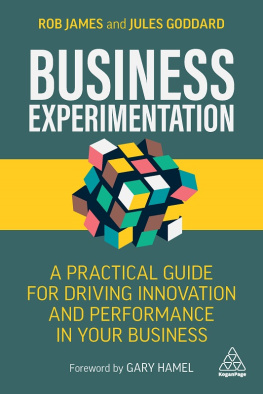


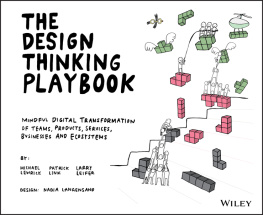
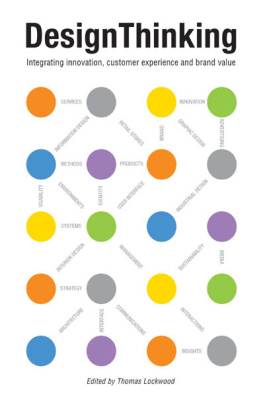
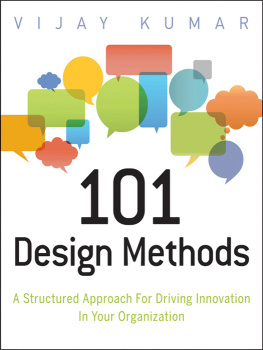
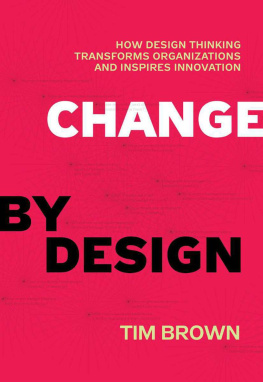

 Printed on acid-free paper.
Printed on acid-free paper.

 Embedding design thinking takes more than a few short boot camps and playbooks that oversimplify the complexities of turning ideas into business.
Embedding design thinking takes more than a few short boot camps and playbooks that oversimplify the complexities of turning ideas into business.